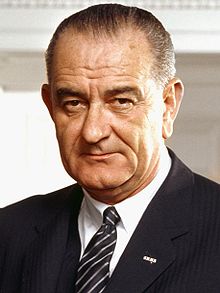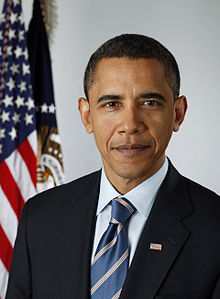
President Roosevelt created the Social Security Administration in 1935.

President Johnson created Medicare in 1965.

President Obama passed the Affordable Care Act in 2010.
People say “Medicare and Social Security are broken. They need to be fixed.” Some say they should be eliminated, or turned into voucher programs. What are the facts? What does “Broken” mean, in the context of Medicare and Social Security?
According to the Social Security Administration,
For 2012, the maximum taxable earnings amount for Social Security (OASDI) taxes is $110,100. There is no limitation on taxable earnings for Medicare’s Hospital Insurance (HI) taxes.
Employee/Employer
- The Social Security tax rate for employees is 4.2 percent through the end of the year
- The Social Security tax rate for employers is 6.2 percent
- The Medicare tax rate is 1.45 percent for employees and employers
Self-Employment
- The Social Security tax rate for self-employed is 10.4 percent through the end of the year. The Medicare tax rate is 2.9 percent for self-employed.”
So the obvious way to fix Social Security, Medicare, and Medicaid seems simply to be:
- For Social Security, to raise the maximum taxable earnings amount for social Security. Maybe it should be $110.1 Million, not $110.1 Thousand. Maybe there should be no limit on income on which people must pay into the Social Security trust.
- And for Medicare, since there is no limit on income on which people pay Medicare, we should either raise the rate or make Medicare more efficient.
According to Daniel S. Hamermesh, an economics professor at the University of Texas, and Royal Holloway University of London, writing in the Austin, Texas Statesman,
Seven percent of American workers make more than $110,100 per year and so do not pay the 6.2 percent Social Security tax on all their earnings — they pay only the 1.45 percent Medical Hospital Insurance tax on their excess earnings. Those low-taxed earnings account for about 17 percent of all pay in the U.S. The second simple solution is to eliminate the Social Security tax break on earnings above $110,100. Benefits for higher-income older people will rise, but that increase will be tiny. This proposal nets over $100 billion extra tax collections per year.
But, according to the Social Security Board of Trustees‘ report on the financial outlook for the Social Security and Medicare Trust Funds, the 2012 Trustees Report, released on April 23, 2012, Social Security will be solvent for 21 years – until 2033.
- The projected point at which the combined Trust Funds will be exhausted comes in 2033—three years earlier than the estimate in last year’s report. At that time, there will be sufficient tax revenue coming in to pay about 75 percent of benefits.
- The projected actuarial deficit over the 75-year long-range period is 2.67 percent of taxable payroll—a 0.44 percentage point larger than in last year’s report.
- Over the 75-year period, the Trust Funds would require additional revenue equivalent to $8.6 trillion in present value dollars to pay all scheduled benefits.
SOCIAL SECURITY DOESN’T NEED FIXING RIGHT NOW! But if it did, one set of obvious logical solutions would be to raise the ceiling on Social Security taxes, increase the Social Security Tax Rate.
Medicare, too, I think, is solvent. It doesn’t need fixing, today. However, the Medicare tax rate is 1.45% for employees and employers, and 2.9% for the self-employed. If we need to raise more revenues, maybe we should raise the tax rate by 0.5% to 1.95% for employers and employees and by 1%, to 3.9% for the self-employed. This would increase the tax for an employee making $50,000 per year from $725 by $250 to $975. Rather than $1450, a self-employed person making $50,000 per year would pay $1950. Across the economy, it would increase Medicare revenues by 34.48%. If in effect for tax year 2012, revenues expected to be $532.7 Billion would actually be $716.4 Billion.
The other way to make Medicare funds go farther would be to expand the program to cover all Americans, not just those over 65, and to simultaneously expand the mission of the Veterans Health Administration to cover all Americans, not just Veterans, to rename it the “Citizens Health Administration. We would also have to raise the Medicare tax rate, however, citizens would no longer have to buy health insurance. The increase in efficiency of expanding the VHA to cover all citizens would result in lower total out of pocket costs for people who currently purchase health insurance, and coverage for working poor who do not purchase health insurance.
This seems only fair – everyone who has a job pays into Medicare. Everyone should benefit from it. I think Presidents Roosevelt, Johnson, and Obama would agree.
–
I know that Grover Norquist won’t like this idea and he will castigate any elected representative who has signed his “no new taxes pledge” but who nonetheless agrees to increase revenues. However, Mr. Norquist is not the President of the United States. He has not been elected to the Senate or the House. As far as I know, he holds no elected position. He is a private citizen. and a professional lobbyist. He is, of course, entitled to his opinion, as are legislators. However, any and every elected or appointed representative in government who adheres to Mr. Norquist’s pledge – or any extra-Constitutional pledge -is in violation of his or her oath of office and should be removed from office forthwith.
–
In addition to my work at Popular Logistics, I currently serve as “Director of Information Technology” for a mid-sized law firm in lower Manhattan. With over 25 years in Information Technology, I have worked as a database administrator, backup and recovery consultant and software developer. I am available for research and analysis on a per project or a per diem basis. I hold a Bachelor’s in Biology and an MBA in “Managing for Sustainability,” from Marlboro College. I can be reached at “L Furman 97” @ G Mail . com and US 732 . 580 . 0024. I believe in America.